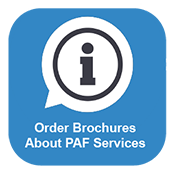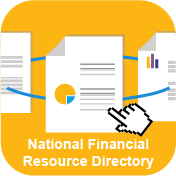Out-of-Network Costs and How to Handle Them
As health insurance plans change and options vary, the same holds true for providers and health care facilities. Although there may be more treatment alternatives for patients available now, that doesn’t necessarily translate into more treatments covered. Because out-of-network costs add up quickly, it is important you become familiar with your plan and whether your health care provider is in your network.
You can be charged with out-of-network costs when care is provided, and the medical provider has not agreed to a negotiated fee with your insurance provider. This means medical providers may charge the full amount for your treatment and your insurance provider may not pay for these charges, leaving the full burden of payment up to you. Avoid being surprised by costs associated with out-of-network fees by educating yourself on your plan’s limitations and additional payment options.
Maximize insurance benefits by reading and understanding your plans language. By becoming familiar with your plans benefits and limitations, you’ll be able to make better healthcare decisions for yourself. If you have questions about your plan, ask your insurance provider or Human Resources manager.
If the provider you use is out-of-network, determine whether the same service is available within your network. If you are comfortable switching doctors to lower healthcare costs, this might be an additional cost-saving option for you. Additionally, if you are thinking about switching plans and see a certain provider regularly, be sure to determine whether they are in the network. If your plan does not satisfy your healthcare needs, explore alternative plans during open enrollment period.
Another way to help offset costs is to inquire through your treating hospital, facility or provider about assistance programs. Usually, facilities have programs that will help with some of the financial burden. There are also state drug assistance programs available through your state commissioner’s office. There are also co-pay assistance programs available nationally and for disease specified programs.
Explore discount drug options with large retailers, supermarkets or pharmacy chains. Different dispensers have different co-pays. Shop around to ensure you are getting the best deal for your prescription.
Utilize resources that provide “cost calculator” for common procedures. Your medical costs may vary depending on what state you live in. Using a cost calculator will help lead you to a ballpark estimate of about what things should cost. This can be especially useful if you are uninsured. You can access a Medical Cost Calculator courtesy of Fair Health http://fairhealthconsumer.org/medicalcostlookup.php. Fair Health is an independent, non-profit organization whose mission is to provide patients with a clear, unbiased explanation of the medical reimbursement process.
Be picky. When choosing a healthcare plan, be diligent about choosing doctors and services within your plan. Before care, ask whether the doctor is in your network. Additionally, if your doctor advises additional treatment like a blood test, don’t assume that it is covered. For every new element of care introduced, ask whether it is in network.
One of the best things you can do to help keep tabs on your healthcare bills is to take good, thorough notes. Some things to consider when organizing your paperwork include asking:
1. What is my financial responsibility?
2. What is my OON deductible?
3. What is my OON cost share (the percent you are responsible for)?
4. Are there above Usual, Customary, and Reasonable Charges (UCR)?
5. What is my out-of-pocket maximum?
The most important thing to remember when tackling out-of-network costs is to educate yourself about your plan and ask questions! By keeping an open line of communication with your healthcare providers and your insurance providers, you’ll be able to help avoid surprises and make the best healthcare decisions for you.
Learn more about The Ins and Outs of Seeking Out-of-Network Care here.










